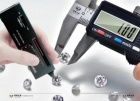车道游戏
我在一个二战后的洛杉矶郊区长大。我们家的小房子坐落在一片非常大的空地上,是个游戏的好地方。最好玩的是一条100步长的车道。在70年代中的很长一段时间里,我妈妈没有车,我爸爸每天骑着唯一的交通工具(一辆很大的、破烂的、白色的、四门的皮卡车)上下班。整条车道成了我和哥哥发明游戏的好场所。我们花了许多天,想出二人玩的近乎所有可以想象得到的运动游戏。奇怪的是,我们偏好的是那些我们所谓的“车库游戏”(例如,车库棒球、车库篮球),那时我们并不知道那个词在游戏产业崛起30年后会有完全不同的含义。
我们家附近没有太多真正的运动器材(我爸爸忙着把钱砸在各种中年危机的兴趣上,如越野摩托),所以我们只能利用在周边能找到的任何东西。从富人建在小山坡的网球场上滚下来的网球成了我们的棒球。我们在车道上玩二人版的棒球,也就是击球手扔球,外野手想尽办法阻止球击中车库。
从小山坡的小学上滚出一个老旧的、褪色的红皮球,成了我们的篮球。我们用滑石粉在打开的车库门上作标记,当作篮筐。当把球从车库门和车库的屋顶之间投过去,就算投篮成功。车库门还用作足球的球门和球场边界。我们的两辆四轮货车成了赛车,而车道就成了我们的赛道。
girl‘s bike(from gamaustra)
为了模拟我爸爸的越野摩托,我从姐姐那儿接手了一辆女孩子骑的、香蕉椅座的小自行车、一顶塑料头盔和一副护目镜,这些成了公路赛车的装备。之后,我哥哥和我花了很多时间推对方绕着坏掉的摩托车转,直到小自行车的齿轮彻底卡死。
这些东西本身没有什么特别的地方,我认识的所有孩子都是这么玩的。然而,我从来没有忘记用自己头手上的东西做出游戏的那种感觉。这教会了我关于制作独立游戏的重要课程:利用你手头上的旧东西制作新东西。如果你可以再利用引擎、灵感或设计制作出新东西,这可以给你提供一个基础,避免“白手起家”地制作东西。
玩具游戏
在70年代,我的一些玩具本身寿命并不长。我记忆犹新的一个“玩具游戏”是我和哥哥用神奇画板(游戏邦注:Etch-A-Sketch是一种儿童玩具,由一支笔和一个画板构成。笔尖有磁铁,可以在班上涂鸦;拉动板下的横条,板上图案即被擦掉)做的。神奇画板是一种糟糕的画图玩具,很难控制,但具备成为一款原始交互游戏的必要元素。我制作这个“游戏”时是8岁(1978年)。灵感源于我在街机上看到的赛车游戏《Grand Trak 10》和《Sprint》。
我们用透明胶和秒表上圈数计时器制作我们自己的赛车游戏,用神奇画板作为输入和显示设备。首先,我们当中的一个人会花点时间将透明胶贴在画板的屏幕上作为赛道。贴完后,另一个人就开始“赛跑”(沿着赛道画线”,不仅要快,而且不可以画到透明胶上。还没“赛跑”的人用秒表计时。
这个游戏不错,只要玩家够诚实,不谎称自己没碰到透明胶。这个游戏吸引了我们的注意力好一阵子。我肯定如果我们努力一下,会吸引到更多人玩我们的神奇画板“赛车”游戏。这个游戏最令人快乐的是,做赛道和在赛道上赛车一样好玩。
etch a sketch racing game(from gamasutra)
对于年轻人,这显然是重要的一课:做东西给别人玩也会令自己快乐,甚至比给自己玩更快乐。
书本游戏
在70年代末,市面上出现了一种叫作“选择你自己的冒险”的系列书,这让我喜欢了好多年。我喜欢能够决定故事结局的感觉,虽然我并不总是喜欢故事本身。
有些“选择你自己的冒险”书有太多结局了。这种书的结局有3到5个,甚至11个都OK。但这么多结局让阅读全书成了一件令人苦恼的事。比如,《Journey Under The Sea》有42个结局。在117页的书中,42个结局意味着有37%的页数都是关于故事结局的。读这本书很让人受挫,因为好像无论你怎么做,都是死路一条。
所以,凭借我11年的“游戏开发”资历,我决定将这本书变成“更好的故事”,这样就不会每看3页就死一回。我增加了我自己的剧情,然后指导读者怎么活得更久。从下图中可以看到我手写的提示。这本书是1981年版的。
Journey Under The Sea 1(from gamasutra)
Journey Under The Sea 2(from gamasutra)
Journey Under The Sea 3(from gamasutra)
这段经历教会了我什么?我学到了,某些事不能因为它“结束了”就表示它完满了。从现有的设计中入手,找到可以改进的地方,也可能是一种有意思有价值的体验,甚至可能成为创新和游戏革命的跳板。
Hacking My Childhood: Early Lessons In Game Design
by Steve Fulton
I spent a lot of time in 70′s and early 80′s as a “game designer” even though I had no idea I was doing it at the time. Here are few of the “hacks” I performed as kid that still resonate with me today as I sit-down to design and program games on daily basis.
Driveway Hacking
I grew up in a post World War II suburban neighborhood near Los Angeles. Our little house sat on pretty large lot with lots of empty space to play. The best feature was a 100 foot long driveway. For a good amount of time in the mid-70′s, my mom had no car, and dad took the only drivable vehicle (a giant, beat-up, white 4-door International pick-up) to work every day. This left the entire driveway open for whatever games my brother and I wanted to create. We spent many days conceiving 2-player versions of nearly every sport imaginable. Curiously, we referred to these sports as ‘Garage Games’ (i.e. Garage Baseball, Garage Basketball), not having any idea that word would have a completely different connotation for the gaming business 30 years later.
There was not a lot of genuine sports equipment laying around our house (my dad was too busy spending his money on multiple mid-life crisis hobbies: i.e. motorcross racing), so we used whatever we could find in the neighborhood. Tennis balls that rolled down the hill from the rich family’s tennis court became our baseballs. We used the full length of the driveway to play a two-player version of over-the-line where the ball was thrown by the batter and the fielder did everything possible to stop it from hitting the garage.
An old, un-returned red rubber ball that rolled down the hill from the elementary school became our basketball. The basket was two chalk markings on the open garage door. A basket was scored it you could wedge the ball between the open door and roof of the garage. The garage door was also used as soccer goal, and football end-zone. Our two red wagons became race cars and the driveway our track.
(Me on my sister’s bike in the driveway)
To emulate my dad’s motorcross racing, my sister’s hand-me-down girl’s, banana seated bike, a plastic helmet, and pair of welding goggles became an off-road racing kit. Later, my brother and I spent a good amount of time pushing each other around on a broken-down 75CC motorcycle, before the gears froze permanently.
None of these things were special on their own, and every kid I knew did similar stuff. However, I never forgot the feeling of making entertainment out what I had on hand. This taught me a valuable lesson about making indie games : use what you have available to make something new. If you can reuse an engine, inspiration or design to make something new, it might help you get moving instead of trying to build something from scratch.
Toy Hacking
Some of my toys in 70′s did not live very long in their intital state. One of “toy hacks” I recall vividly is the Etch-A-Sketch “mod” my brother and I created. Etch-A-Sketch was (is) a frustrating drawing toy with terrible controls, but it had all the essential ingredients to be a primitive interactive game. I was 8 years old (1978) when we created this “hack”. It was based on the racing games I had witnessed in the arcade like Grand Trak 10 and Sprint.
By using scotch tape and the lap timer on a stop watch, my brother and I created our own racing contest using the Etech-A-Sketch as an input and display device. First, one of us would spend the time to lay-down an elaborate track using scotch tape over the Etch-A-Sketch screen. When that was finished, the other one of us would attempt to ‘race’ (draw a line through the track) as fast as possible without hitting any of the scotch tape lines as he was timed by the digital watch by the other
It worked fairly well, as long as the players were honest about not hitting the barriers. This kept our attention for a while and I’m sure we could have found many more uses for the Etch-A-Sketch Racing ‘engine’ if we tried. What was cool about it was that it was just as enjoyable to make the tracks as to race through them.
(Etch a sketech racing game mock-up)
This was obviously an important thign to learn at a young age: making things for others to enjoy could just as enjoyable or even more enjoyable than playing.
Book Hacking
In the late 70′s Choose Your Own Adventure books arrived, and they were a passion of mine for many years. I loved the having the ability to determien the outcome of the book, but I did not always like the stories.
Some Choose Your Own Adventure books had too many endings. 3 or 5, even 11 endings was O.K. for one of the books, but some had so many endings it made reading them a chore. The book below, “Journey Under The Sea” had 42 endings. At 117 pages, 42 endings meant 37% of the pages were devoted to ending the book in some way. Reading it was frustrating because it seemed that no matter what you did, you died.
So, with my 11-year old proto game development hat on, I proceeded to “hack” the book to make a “better story” that did not make you die on every 3rd page. I added my own text and directions to make you live longer and have a longer story. You can see some of my handiwork below. This particular book was from 1981.
(Choose Your Own Adventure Hack)
What did this exercise teach me? It taught me that just because something was “finished” did not mean it was perfect. Working with an existing design to find areas for improvement could be an interesting rewarding experience, and it could be a springboard to new ideas and game play evolutions.(source:gamasutra)
资讯排行
- 星光熠熠 多面演绎Hearts On Fire赫兹斐亚VELA系列全新钻石珠宝
- 铂金向前 负责任 致未来 国际铂金协会(PGI®)成功举办2024铂金首饰中国论坛
- 跑赢时间的传承符号铂金(Pt)——全球顶奢珠宝品牌铂金臻品亮相上海
- 黄金行业掀新风潮--六福珠宝革新炫彩工艺 打造黄金新体验
- 铂金向前 循势生长 国际铂金协会(PGI®) 发布《2024铂金首饰趋势洞察》
- 黄金与莫桑钻|奢华与璀璨,永恒魅力完美结合
- 关于邀请参加2025年“珠宝玉石检测”及“镶嵌钻石分级”能力验证计划的预通知
- 珠宝国检集团(NGTC)董事长王宝民一行与香港贸易发展局(HKTDC)副总裁张淑芬会面 共探珠宝行业新机遇
- 金伯利钻石国风珠宝,春日的最佳点缀
- 国风雅韵,意蕴新生——周生生携手中国当代美学摄影师张家诚呈献珠宝大片-中国珠宝行业网
- 周大生珠宝丨“告白气球”钻石项链新品520甜蜜上新-中国珠宝行业网
- 珠宝国检集团受邀出席世界珠宝联合会2024年代表大会
- “紫禁城与凡尔赛宫——17-18世纪的中法交往”展览暨中法文化之春开幕,卡地亚与故宫博物院签署合
- 黄金饰品价格行情-金投黄金网-金投网
- 揭秘“阴阳太极大师紫砂壶”制作全程









